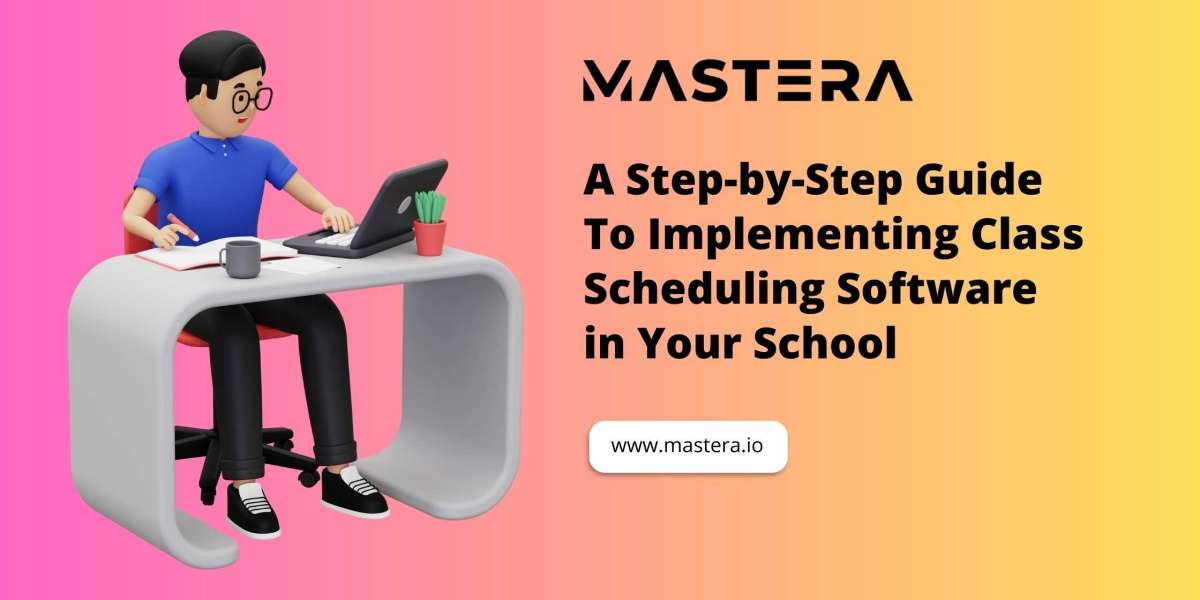Efficient class scheduling is at the heart of a well-organized educational institution. With the advancement of technology, traditional manual scheduling processes can be replaced with more streamlined and effective solutions. Class scheduler software offers schools the ability to optimize their resources, reduce scheduling conflicts, and enhance the overall learning experience.
In this guide, we will walk you through the step-by-step process of implementing class scheduling software in your school, ensuring a smooth transition and improved academic operations.
1. Assess Your Needs
Before diving into the world of class scheduling software, it's crucial to assess your school's specific needs. Identify the pain points and challenges you currently face with manual scheduling. Are there frequent conflicts between classes or resources? Are teachers and students experiencing difficulties with the current schedule? Determine the specific features and functionalities you require from the software to address these issues effectively.
2. Research and Select a Software Solution
With a clear understanding of your needs, research available class scheduling software options. Look for solutions that offer features such as conflict resolution, resource allocation, customization options, and integration with other school management systems. Read reviews, compare pricing, and request demos or trials to evaluate the user interface and overall user experience. Choose a software that aligns closely with your school's requirements.
3. Gather Stakeholder Input
Involve key stakeholders, including teachers, administrative staff, and students, in the decision-making process. Their insights can provide valuable perspectives on what features are essential and how the software can best serve their needs. By involving stakeholders early on, you can address concerns, build buy-in, and ensure the software's successful adoption.
4. Data Migration and Integration
If your school already has existing data, such as class schedules, student information, and faculty details, plan for a seamless data migration. Work closely with the software provider to ensure that data is transferred accurately and securely. Additionally, check if the software can integrate with your school's other systems, such as student information systems or learning management platforms, to create a unified ecosystem.
5. Customization and Configuration
Once the software is in place, customize it to match your school's specific requirements. Configure the software to reflect your academic structure, including terms, semesters, and bell schedules. Input teacher preferences, classroom capacities, and any other relevant details that will impact scheduling decisions. This step ensures that the software produces schedules that align with your school's unique needs.
6. Training and Onboarding
Provide thorough training to the staff members who will be using the class scheduling software. Offer both initial training sessions and ongoing support to address any questions or issues that may arise during the implementation process. This training will empower your staff to utilize the software effectively and take advantage of its features to streamline scheduling operations.
7. Test and Refine
Before implementing the software for live scheduling, conduct thorough testing. Run simulations and scenarios to identify any potential conflicts or issues that may arise during scheduling. Use this testing phase to refine the software's settings, algorithms, and parameters to ensure optimal results.
8. Communicate with Stakeholders
Effective communication is key to a successful implementation. Notify teachers, students, and parents about the upcoming transition to class scheduling software. Provide clear instructions on how the new system will work, its benefits, and how it will improve the overall educational experience. Address any concerns and answer questions to alleviate any apprehensions.
9. Rollout and Continuous Improvement
Once the software is fully configured, tested, and communicated to stakeholders, begin the rollout process. Monitor the implementation closely during the initial stages and gather feedback from users. Use this feedback to make necessary adjustments and improvements. Class scheduling software should be a dynamic tool that evolves based on user experiences and changing needs.
10. Evaluate and Optimize
After the software has been in use for a period, evaluate its impact on your school's scheduling efficiency, resource utilization, and overall academic operations. Are conflicts reduced? Are teachers and students finding the new system user-friendly? Identify areas of success and areas that need improvement. Regularly review and optimize the software's settings to ensure that it continues to meet your school's evolving requirements.
Conclusion
Implementing class scheduling software in your school can revolutionize the way academic operations are managed. By following this step-by-step guide, you can ensure a smooth transition, enhance efficiency, and provide a better learning experience for teachers and students alike. From assessing your needs to continuous improvement, each stage of the implementation process contributes to creating a well-organized and optimized educational environment.


